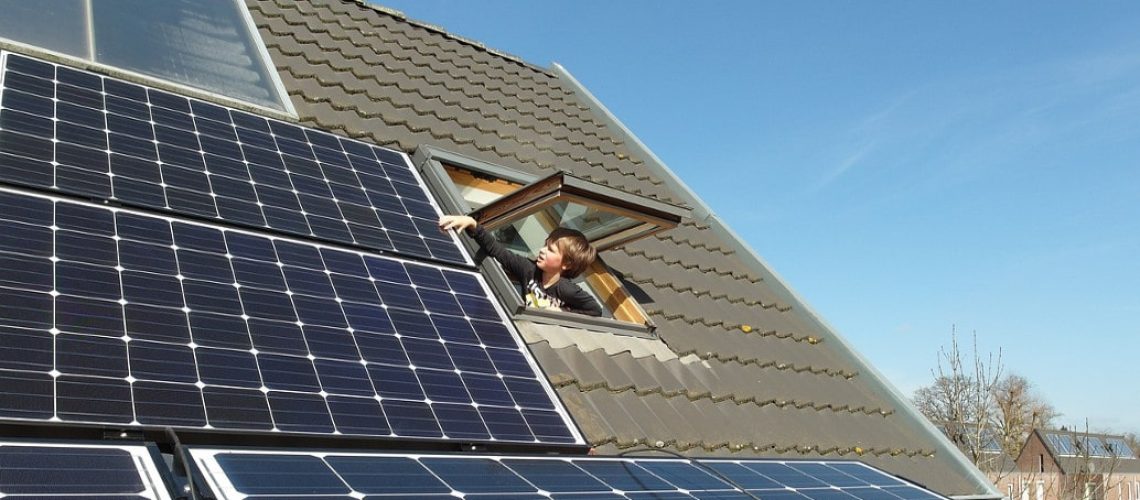Government research suggests that residential solar prices increased by about 10¢/W in the second half of 2021, and are up 20¢/W in the first half of 2022. However, accounting for inflation, residential solar prices are flat or decreasing.
Over the past two years, much of the United States has experienced double digit inflation. Some industries, like lumber, have now returned to their pre-Covid baseline. Others – like residential electricity prices – may have a little more price growth coming. Residential solar power has certainly experienced some price bumps, but when we account for inflation, it looks like prices actually declined in 2021, and flattened in 2022.
The U.S. Department of Energy’s Lawrence Berkeley National Laboratory (LBNL) released its annual Tracking the Sun report, which documents the installed pricing of over 2.5 million solar power projects smaller than 5 MWac.
LBNL has found that since the year 2000, the median installed price of residential solar has averaged a price decline of 40¢/W/year. Starting in 2013, that price drop decreased to 10 to 20¢/W/year.
As we can see from the chart above, these pricing trends were heavily dependent on the price of solar panels. LBNL reports that module pricing increased slightly in 2021-2022.
The report says that from 2020 to 2021, accounting for inflation, prices fell between 10 to 20¢/Wdc. In 2022, again accounting for inflation, pricing was flat relative to the prior year.
![]()
Of course, in nominal terms – the actual dollar amount written on the check – pricing has increased. In the second half of 2021, pricing increased by a dime prior to inflation adjustment – an increase of approximately 2.6%. In the first half of 2022, pricing inflation increased by 20¢/Wdc – an additional 5.1% increase.
The Energy Information Administration projects that residential electricity pricing will increase by 2.6% for the whole of 2022. If residential solar pricing is flat in the second half of 2022, then solar and electricity pricing will see a similar annual increase.
This relatively flat pricing increase is more complex when we look at it on a state level.
![]()
While average prices in all states have decreased over the past five years, more than half of U.S. states showed price increases year over year from 2020 into 2021. The researchers noted that we would have seen a much higher national price increase if it were not for the strong price decreases found in the largest U.S. market: California.
The pricing increases were found in solar modules, solar racking, balance of system hardware like copper and other electrical components, as well as labor costs.
On a per system basis, installed pricing varies greatly across the pool of approximately 1.2 million projects analyzed. There are more than 3.2 million installations in the USA.
![]()
The largest variable was the addition of a 5 kW/10-15 kWh battery to a residential storage project, which increased system pricing by $1.90/Wdc. The second largest variable was the state ‘fixed-effects’, which saw a range of plus $1/W to minus 50¢/Wdc. Adding a microinverter increased pricing by about 50¢/Wdc, and optimizers added 40¢/Wdc.
Additional nuance that ties together the state effect and microinverters/optimizers is that states with more progressive pro-solar policies tend to have a more recent iteration of the National Electric Code (NEC), which has a tendency to increase system pricing. Some of these pro-solar states also have stronger labor costs and pro-union structures.
For example, Massachusetts and Rhode Island are among the states with higher prices. They have more recent NEC code requirements, relatively high electricity pricing, and pro-labor policies. All of these factors contribute to system pricing.
One point about LBNL pricing is that it is a bit higher than the pricing put forth by other national groups.
![]()
Researchers noted that LBNL pricing is higher than average costs by SunPower and EnergySage, but lower than Sunrun. One explanation for Tracking the Sun’s higher list prices is that they include dealer fees for loan-financed systems, which can increase pricing by 10 to 25% – a consequence of instant finance, no money down deals. Sunrun pricing has remained high primarily due to their customer acquisition costs, which are still the highest in the industry.
The pricing for LBNL exceeds that of modeled pricing from NREL and Wood Mackenzie, which look at what solar could cost, assuming there are no adders, or unique project level variables.



